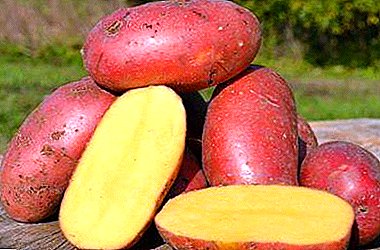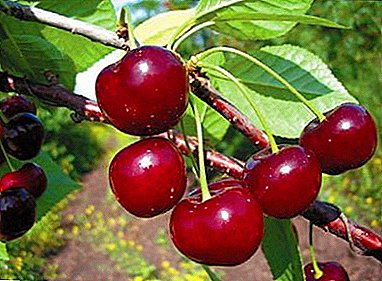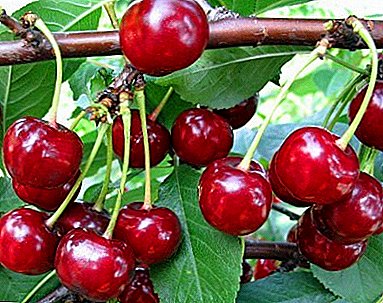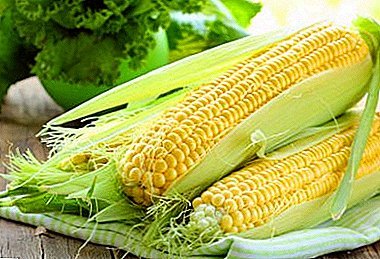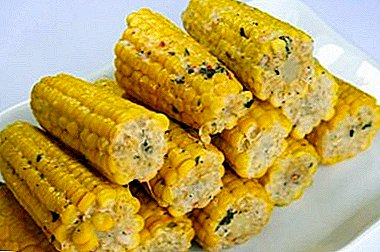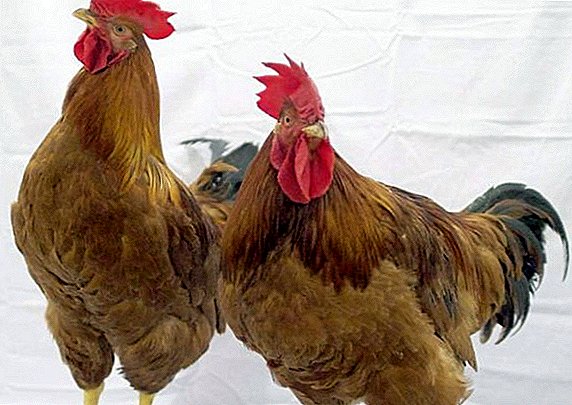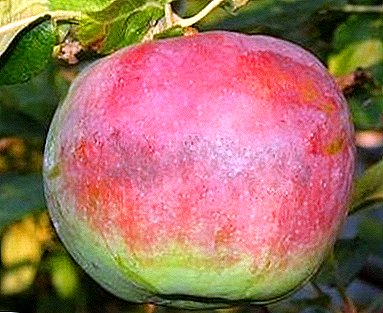
The name of the variety speaks for itself; these apples retain wonderful taste and freshness until April.
No wonder they were the winners at the international exhibition in Germany.
Plant an apple tree variety April on the sunny part of the garden, and its fruits will delight you with their ruddy, bright red sides. Only Do not forget to care for her well. Then you can read the description of the variety, what kind of care the apple variety April requires and see the photo of the fruit.
What kind is it?
April refers to winter varieties southern regions of the middle zone of the European part of Russia.
The frost resistance of apple trees is not always sufficient. for growing in the middle lane, where in severe winters trees can freeze slightly.
To the winter varieties also belong to the memory of a warrior, Isetsky late, Rennet Chernenko, Moscow Jubilee and Winter Beauty.
Pollination
 Apple trees self-infertile. The best pollinators for this variety: Rossoshanskoe Polosatoe, Northern Sinap, Cherry. For successful pollination and obtaining a good harvest, apple trees are planted at a distance no more than 50 m from each other.
Apple trees self-infertile. The best pollinators for this variety: Rossoshanskoe Polosatoe, Northern Sinap, Cherry. For successful pollination and obtaining a good harvest, apple trees are planted at a distance no more than 50 m from each other.
It is recommended to have on site at least three apple-trees of intergum varieties. It is believed that pollination with a mixture of pollen increases the yield compared with pollinating pollen from trees of the same variety.
Description grade April
Consider separately the appearance of the apple and its fruit.
Trees high. Young apple crown narrow pyramidal, later becomes more sprawling, wide-pyramidal shape. The krone is not thick. Uterine branches of light brown color, directed at an acute angle. Shoots have a dark cherry color, thick, with knees, mildly pubescent. On the shoots visible small lentils of gray.
Leaves are light green, dull, pubescent. The variety is characterized by a large size of leaves, which have an oblong shape with a large bent tip and an oval base.
 The edges of the leaves are bicuspid with wide, blunt cloves, sometimes at the end of the leaf the edges are slightly raised. In general, the surface of the leaves is flat, covered with fine wrinkles due to depression of the veins.
The edges of the leaves are bicuspid with wide, blunt cloves, sometimes at the end of the leaf the edges are slightly raised. In general, the surface of the leaves is flat, covered with fine wrinkles due to depression of the veins.
In some instances, there is a slight waviness. On the shoots, leaf stalks are thick, relatively long, extending at an angle of 60-70º.
The lower leaves of the stalk are at an angle of 90º. The leaf plane deviates from the shoot, and the lower leaves are omitted relative to the petiole. The leaf has small styevoid stipules. Buds large, well-pubescent, in the form of a blunt cone.
One-year saplings do not branch. In nurseries, apple trees are tall, with straight trunks dotted with small gray lentils.
Fruit large size (weight reaches 200 g), conical or flat-rounded. Ribing is more noticeable in the apex area.
The saucer is narrow, but deep. Sepals are small, open or loosely closed. The funnel is small and narrow. The stem is long and thick.
The heart has an onion shape and is displaced towards the top of the fruit. Small seed chambers are located at the bottom of the heart. The chambers are closed or opened in the axial cavity.
The axial cavity itself is also small. Podchashechnaya tube in the form of a wide cone.
 The peel of the fruit is smooth and delicate. The main color of apples is green or greenish-yellow.
The peel of the fruit is smooth and delicate. The main color of apples is green or greenish-yellow.
Very beautiful coating color: bright, saturated maroon-red color, it occupies a smaller part of the apple surface and appears on the sunlit side of the fruit.
The more light the fruit receives, the brighter the coloring; deep in the crown apples paler.
Pulp with a greenish tinge, oily, fine-grained and dense in consistency. Apples of this variety very juicy, aromatic, have a sweet and sour dessert taste.
The varieties of apples can also please you with a great taste: Orlovsky pioneer, Ekranny, Bolshoy Narodnoe, Orlinka and Aromatny.
A photo




Breeding history
Apple tree April is received on Rossoshansky fruit station (now Rossoshansky Zonal Experimental Station), bred by hybridization of Rossoshansky and American varieties Mekintosh.
The author of the variety is a famous Soviet breeder M. M. Ulyanischev. Apples of the April variety were awarded a gold medal on The International Erfurt Exhibition in 1969.
Growing region
 Belongs to varieties of medium winter hardiness. Main growing region Central Chernozem stripmostly prevalent in the Tambov and Voronezh regions.
Belongs to varieties of medium winter hardiness. Main growing region Central Chernozem stripmostly prevalent in the Tambov and Voronezh regions.
In the Central regions for fruit ripening under adverse climatic conditions may not be enough heat.
Apple tree April can be grown in conditions Moscow region and in neighboring areas but frost resistance of apple trees is low here.
For planting in this region, the following apple varieties are excellent: Idared, Gala, Winter Hrusovka, Stroevsky and Sunny.
Yield
Pretty late fruiting variety: first harvest for 4-6 year. The yield is annual, average. According to other data (G.A. Lobanov, 1971), the April apple tree is more varietal variety and has relatively high yield.
Apple trees mainly bear fruit on long fruit branches and twigs. Fruit ripen by the last decade of September.
To store apples removed from the tree along with the stalks, trying Avoid skin injury. Fruits are sorted by size and placed in wooden boxes that are stored in the cellar or basement.
In cold conditions, apples can be preserved until April without loss of taste, which explains the name of the variety.
High yields can boast varieties: Bogatyr, Bryansk gold, Volzhanka, Jonathan and Zavetny.
Planting and care
 Apple varieties of this variety love sunlight, so you should choose places with sufficient light for planting. Landing is carried out in spring or autumn according to standard rules.
Apple varieties of this variety love sunlight, so you should choose places with sufficient light for planting. Landing is carried out in spring or autumn according to standard rules.
The distance between the trees in the garden should be not less than 4-6 m and not more than 50 m for effective pollination.
To buy seedlings should be in nurseries at the place of residence, it is a guarantee that the apple tree is adapted to local conditions.
The younger the seedling, the better. It is good if the tree is dug up right at the time of purchase: this way you can make sure that it was grown in this very nursery.
Before transporting the roots, wrap them with moss, a damp cloth or paper and wrap them in plastic wrap to preserve moisture. When buying a sapling in a container, inspect it from below and make sure that there are visible young roots.
For the successful development of apple trees most favorable neutral, well-fertilized soils rich in potassium and organic matter. The soil should be well hydrated. The seat for the seedling is prepared in advance.
If the soil is fertile, the trees are planted in pits, and on loam, sandy loam, chernozem it is enough to remove the top layer of earth and make a depression of 15-20 cm.
On sandy soils it will be necessary to prepare a large square hole about 80 cm deep put into it moss to retain moisture and nutrientsthen cover with fertile soil.
 Planting seedlings produced next year, also required make a complex mineral fertilizer.
Planting seedlings produced next year, also required make a complex mineral fertilizer.
Organic fertilizer is also applied to sandy, sandy and podzolic soils. compost or manure.
Remember that mineral fertilizers and fresh manure can not be applied directly during planting, as they can cause burns.
Clay, peat, as well as wet areas with close groundwater deposition are not suitable for apple trees. In these cases, a bulk hill is prepared for landing.
Planting seedlings carried out with a peg, which is driven into the center of the planting pit. The roots of the seedling carefully spread on a peg and gradually sprinkled with earth. It is more convenient to do it together.
Do not plant the tree too deeply; this will impair its growth and may lead to death. The root neck should be located 3-5 cm above ground level.
After planting seedling loose tied to a peg. Later, after the soil subsides, the tree is tied up carefully, better with the help of three pegs. Immediately after planting the seedling is necessary plenty of water (1-2 water buckets), even in rainy weather. For this purpose, along the edges of the pits make the hole.
Apple trees, especially young ones, are required need regular watering. To retain moisture spend soil mulching with sawdust, bark, dung or black film.
 Spring apple tree trunks Whiten for the prevention of sunburn.
Spring apple tree trunks Whiten for the prevention of sunburn.
Highly It is important to regularly prune trees. In the spring, during pruning, only dry branches are removed: during sap flow, severely damaging the tree is undesirable, since running out of the juice can lead to drying of the branches.
Formation of the crown is better to do in the fall after the end of fruiting. During the autumn pruning spend shortening and thinning of the branches. Dry branches are removed.
Cut off part of the shoots that interfere with each other, get rid of thickened parts of the crown.
The general rule when pruning: remove competing with the central trunk, vertically growing branches, leaving horizontal. Sections cover garden pitch.
Overly addicting to pruning is not recommended, as it hurts the tree and leads to increased growth of young shoots.
Diseases and pests
In the wet years of apple varieties susceptible to scab.
To prevent disease, trees should be planted at a sufficient distance from each other, to prevent the thickening of the crown. Sick leaves must be immediately removed and burned.
For the prevention and treatment of scab used special drugs, spraying Bordeaux mixture. Along with various fungicides successfully used biologics of the new generation "Healthy Garden", "Charm", "Zircon".
 They increase the resistance of plants to scab, as well as to powdery mildew, protect against pests and are harmless to humans.
They increase the resistance of plants to scab, as well as to powdery mildew, protect against pests and are harmless to humans.
Recommended avoid the use of potent poisons and chemotherapy drugs, many of which are prohibited for use near housing, including garden plots.
It is also worth taking care of taking preventive measures against common pests of apple orchards, such as fruit straw, miner apple moth, apple moth, silkworms and haws.
Due to moderate winter hardiness, the April variety is best suited for growing in the southern regions of central Russia.
Apples of this variety are especially appreciated for their tender flesh, excellent taste and beautiful presentation, which is the hallmark of all Rossoshansky varieties.
Another advantage of the April is a long the shelf life of the fruit - until April. The disadvantages include relatively late onset of fruiting, moderate yields, and susceptibility to scab.
Watch a video on how to make a Bordeaux liquid.


